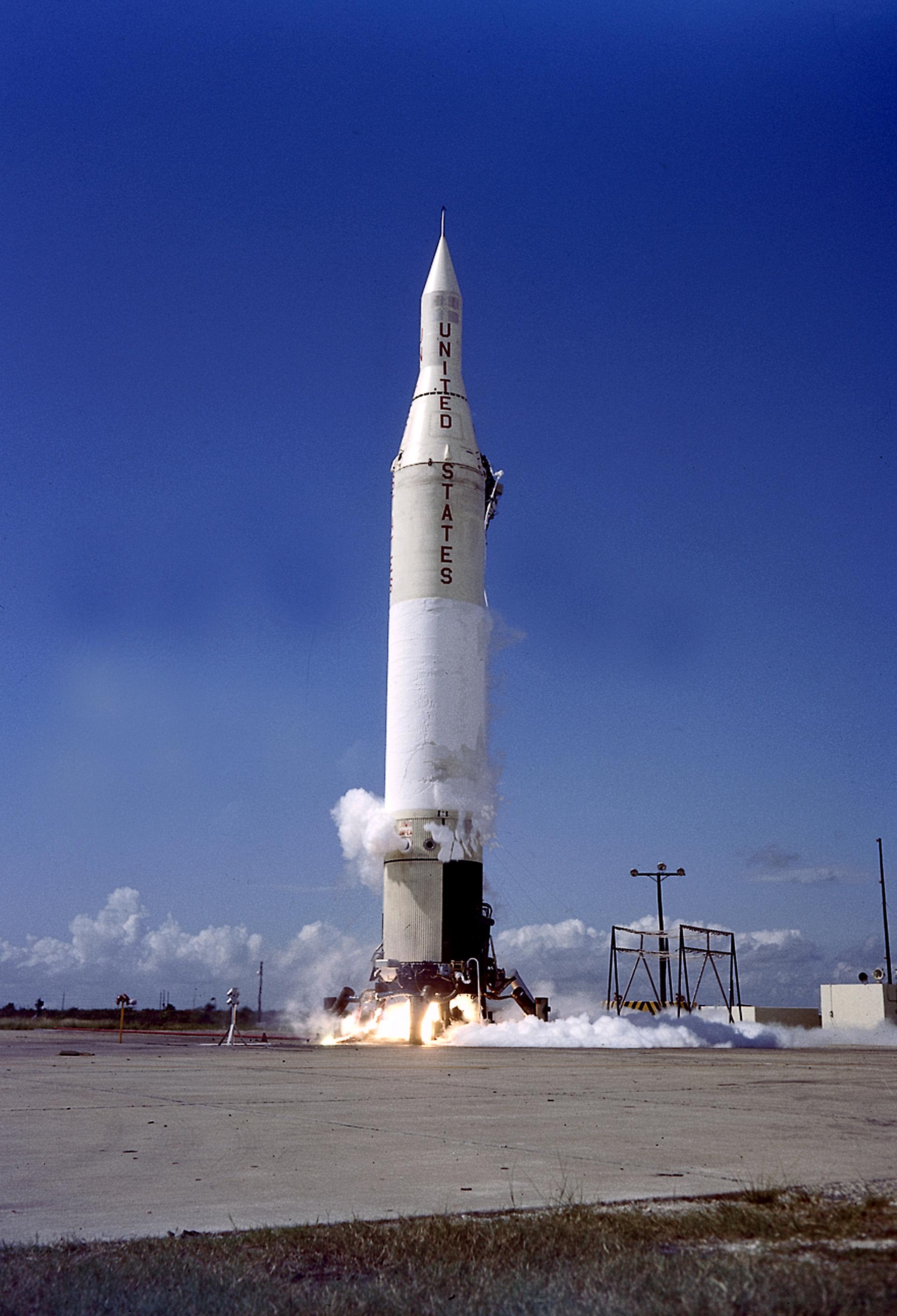
Juno II
In-active JunoArmy Ballistic Missile Agency (ABMA)
Dec. 6, 1958
Description
Juno II was an American space launch vehicle used during the late 1950s and early 1960s. It was derived from the Jupiter missile, which was used as the first stage.
Specifications
-
Minimum Stage
3 -
Max Stage
4 -
Length
24.0 m -
Diameter
2.67 m -
Fairing Diameter
― -
Launch Mass
55 T -
Thrust
654 kN
Family
-
Name
Juno II -
Family
Juno -
Variant
― -
Alias
― -
Full Name
Juno II
Payload Capacity
-
Launch Cost
― -
Low Earth Orbit
41 kg -
Geostationary Transfer
Orbit
― -
Direct Geostationary
― -
Sun-Synchronous Capacity
―
Army Ballistic Missile Agency
Government
None
ABMAThe Army Ballistic Missile Agency was formed to develop the U.S. Army's first large ballistic missile. The agency was established at Redstone Arsenal on 1 February 1956, and commanded by Major General John B. Medaris with Wernher von Braun as technical director.
Juno II | S-45A
Army Ballistic Missile Agency | USACape Canaveral, FL, USA
May 24, 1961, 7:48 p.m.
Juno II | Explorer 11
Army Ballistic Missile Agency | USACape Canaveral, FL, USA
April 27, 1961, 2:16 p.m.
Juno II | S-45
Army Ballistic Missile Agency | USACape Canaveral, FL, USA
Feb. 25, 1961, 12:13 a.m.
Juno II | Explorer 8
Army Ballistic Missile Agency | USACape Canaveral, FL, USA
Nov. 3, 1960, 5:23 a.m.
Juno II | NASA S-46
Army Ballistic Missile Agency | USACape Canaveral, FL, USA
March 23, 1960, 1:35 p.m.
Juno II | Explorer 7
Army Ballistic Missile Agency | USACape Canaveral, FL, USA
Oct. 13, 1959, 3:30 p.m.
Status: Launch Successful
Mission:
Explorer 7 was designed to measure solar x-ray and Lyman-alpha flux, trapped energetic particles, and heavy primary cosmic rays. Secondary objectives included collecting data on micrometeoroid penetration, molecular sputtering and studying the Earth-atmosphere heat balance.
Low Earth OrbitJuno II | Beacon
Army Ballistic Missile Agency | USACape Canaveral, FL, USA
Aug. 15, 1959, 12:31 a.m.
Juno II | NASA S-1
Army Ballistic Missile Agency | USACape Canaveral, FL, USA
July 16, 1959, 5:37 p.m.
Status: Launch Failure
Mission:
The S-1 satellite was a geoscience satellite equipped with a suite of scientific instruments to study the environment around the Earth. It was destroyed 5 seconds into launch when the launch vehicle exploded due to an issue with the launch vehicles power supply.
Elliptical OrbitJuno II | Pioneer 4
Army Ballistic Missile Agency | USACape Canaveral, FL, USA
March 3, 1959, 5:10 a.m.
Juno II | Pioneer 3
Army Ballistic Missile Agency | USACape Canaveral, FL, USA
Dec. 6, 1958, 5:44 a.m.
Falcon 9
Galileo L12 (FOC FM25 & FM27)
Launch Complex 39A - Kennedy Space Center, FL, USATwo satellites for Europe's Galileo navigation system. Originally planned for launch on Soyuz-ST and then Ariane 6 but both were unavailable. Gali…
Long March 2
Shenzhou 18
Launch Area 4 (SLS-1 / 921) - Jiuquan Satellite Launch Center, People's Republic of ChinaSeventh crewed flight to the Chinese space station.
Electron
Beginning Of The Swarm (ACS3 & NeonSat-1)
Rocket Lab Launch Complex 1B - Onenui Station, Mahia Peninsula, New ZealandNASA's Advanced Composite Solar Sail System (ACS3) is a technology demonstration mission tasked with deploying a composite boom solar sail. NeonSa…
Falcon 9
Starlink Group 6-53
Space Launch Complex 40 - Cape Canaveral, FL, USAA batch of 23 satellites for the Starlink mega-constellation - SpaceX's project for space-based Internet communication system.
Long March 2D
Yaogan 42-02
Launch Complex 3 (LC-3/LA-1) - Xichang Satellite Launch Center, People's Republic of ChinaThe Yaogan 42-02 is a Chinese military “remote sensing” satellite of unknown purposes.

